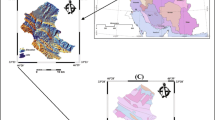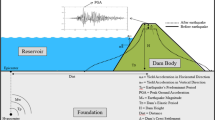Abstract
Accurate predictive field strength and coverage modelling during and after cellular network planning process is one key factor that contribute to a successful and robust wireless communication network performance. Accurate field strength coverage prediction will provide realistic idea about the level of field strength and link quality in the entire coverage service areas. It will also assist in close-fitting fringe areas that are likely to be imparted negatively by interference, and cell edge/contour areas with poor signal coverage. Therefore, opting for a suitable predictive field strength system model that will enable superb cellular network planning environment will be of a great succor to the radio network planner and stakeholders, including the network end users as well. This work presents spatial electric field strength prediction engaging hybrid wavelet-neural modelling approach. The proposed is called Wavelet-GRNN. To accomplish this task, the spatial field strength data is first routed through a wavelet-based decomposition process employing three decomposition levels. The decomposed field strength constituents are then utilised as input data to GRNN neural network model where relevant extracted information is captured and trained for robust predictive learning. In the third phase of the model, the outputs from the GRNN predictor are combined with wavelet coefficients to form the final predicted output. The degree of prediction accuracy using the Wavelet-GRNN model over other prediction techniques are also statistically quantified and provided using six different first order statistics.






















Similar content being viewed by others

References
Seybold, J. S. (2005). Introduction to RF propagation. Hoboken: Wiley. https://doi.org/10.1002/0471743690.
Joseph, I., & Konyeha, C. C. (2013). Urban area path loss propagation prediction and optimization using Hata model at 800 MHz. IOSR J Appl Phys, 3(4), 8–18.
Isabona, J., Konyeha, C. C., Chinule, C. B., & Isaiah, G. P. (2013). Radio field strength propagation data and pathloss calculation methods in UMTS network. Adv Phys Theories Appl, 21, 54–68.
Fraile, R., Rubio, L., & Cardona, N. (2000). Application of RBF neural networks to the prediction of propagation loss over irregular terrain. In Proceedings of IEEE 52th vehicular technology conference (Vol. 2, pp. 878–884). https://doi.org/10.1109/vetecf.2000.887127.
Cerri, G., Cinalli, M., Michetti, F., & Russo, P. (2004). Feed forward neural networks for path loss prediction in urban environment. IEEE Transactions on Antennas and Propagation, 52(11), 3137–3139. https://doi.org/10.1109/TAP.2004.835252.
Lee, W. H., & Lai, A. K. Y. (2000). Function-based and physics-based hybrid modular neural network for radio wave propagation modeling. In IEEE antennas and propagation society international symposium. Transmitting waves of progress to the next millennium. 2000 digest. Held in conjunction with: USNC/URSI national radio science meeting (Vol. 1, pp. 446–449). Salt Lake City, UT. https://doi.org/10.1109/aps.2000.873858.
Wu, C. L., Chau, K. W., & Fan, C. (2010). Prediction of rainfall time series using modular artificial neural networks coupled with data preprocessing techniques. Journal of Hydrology, 389(1–2), 146–167. https://doi.org/10.1016/j.jhydrol.05.040.
Chen, W., & Chau, K. (2006). Intelligent manipulation and calibration of parameters for hydrological models. International Journal of Environment and Pollution, 28, 432–447.
Nawi, N. M., Atomi, W. H., & Zehman, M. Z. (2013). The effect of data preprocessing on optimized training of artificial neural networks. Procedia Technology, 11, 32–39. https://doi.org/10.1016/j.protcy.2013.12.159.
Anysz, H., Zbiciak, A., & Nabi, I. (2016). The influence of input data standardization method on prediction accuracy of artificial neural networks. Procedia Engineering, 153, 66–70. https://doi.org/10.1016/j.proeng.2016.08.081.
Ebhota, V. C., Isabona, J., & Srivastava, V. M. (2019). Environment-adaptation based hybrid neural network predictor for signal propagation loss prediction in cluttered and open urban microcells. Wirel Pers Commun, 104, 935–948. https://doi.org/10.1007/s11277-018-6061-2.
Taylor, J. W. (2003). Short-term electricity demand forecasting using double seasonal exponential smoothing. Journal of the Operational Research Society, 54(8), 799–805. https://doi.org/10.1057/palgrave.jors.2601589.
Vijayakumar, N., & Plale, B. (2007) Prediction of missing events in sensor data streams using kalman filters. In Proceedings of the 1st Int’l workshop on knowledge discovery from sensor data, in conjunction with ACM 13th Int’l conference on knowledge discovery and data mining.
Specht, D. F. (1991). A General Regression Neural Networks. IEEE Transactions on Neural Networks, 2(6), 568–576. https://doi.org/10.1109/72.97934.
Ebhota, C., Isabona, J., & Srivastava, V. M. (2018). Improved adaptive signal power loss prediction using combined vector statistics based smoothing and neural network approach. Progress In Electromagnetics Research C, 82, 155–169.
Jo, H., Park, C., Lee, C., Choi, H. K., & Park, J. (2020). Path loss prediction based on machine learning techniques: Principal component analysis, artificial neural network, and Gaussian process. Sensors. https://doi.org/10.3390/s20071927.
Piacentini, M., & Rinaldi, F. (2011). Path loss prediction in urban environment using learning machines and dimensionality reduction techniques. Comput Manag Sci, 8, 371–385. https://doi.org/10.1007/s10287-010-0121-8.
Author information
Authors and Affiliations
Corresponding author
Additional information
Publisher's Note
Springer Nature remains neutral with regard to jurisdictional claims in published maps and institutional affiliations.
Rights and permissions
About this article
Cite this article
Isabona, J. Wavelet Generalized Regression Neural Network Approach for Robust Field Strength Prediction. Wireless Pers Commun 114, 3635–3653 (2020). https://doi.org/10.1007/s11277-020-07550-5
Published:
Issue Date:
DOI: https://doi.org/10.1007/s11277-020-07550-5



